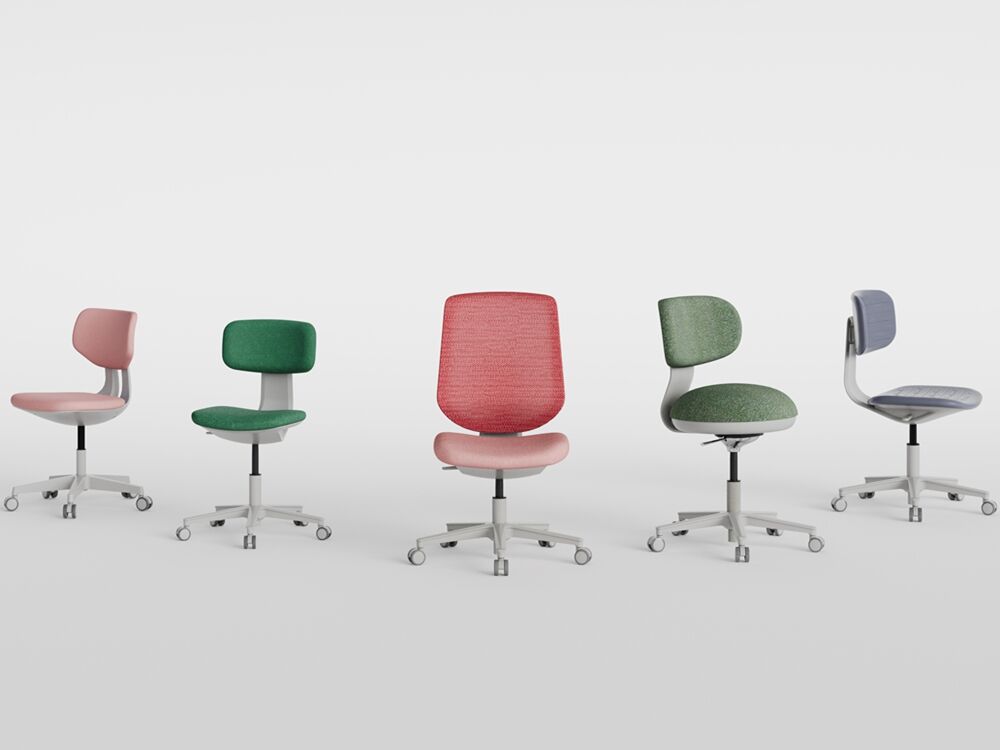
Ergonomic Support and Comfort of Fabric Office Chairs
How Fabric Contours to Body Shape for Pressure Relief
Fabric office chairs are celebrated for their ability to provide ergonomic support by conforming to the body's unique contours. This adaptability is especially evident when chairs are cushioned, allowing the material to distribute body weight evenly and thus minimize pressure points. As highlighted in ergonomic studies, materials that contour to the body significantly enhance comfort and promote better long-term health during extended working hours. This is crucial for individuals who spend considerable time seated, as it aids in reducing the strain on muscles and joints, thereby preventing discomfort and potential injuries. I have seen fabric office chairs incorporating advanced technologies, such as memory foam and gel-infused padding, which further enhance their adaptive qualities. These innovations not only improve the fit but also offer enhanced support, making them a wise choice for anyone seeking to optimize their comfort at the workplace.
Lumbar Support Features in Adjustable Fabric Designs
Lumbar support is paramount in maintaining proper spine alignment and preventing discomfort during prolonged sitting periods. Ensuring that the natural curve of the lower spine is supported helps in minimizing the risk of developing chronic back pain, which is prevalent among office workers. Many ergonomic fabric office chairs are equipped with adjustable lumbar support mechanisms, allowing users to tailor the support to their specific needs. This customization is vital in accommodating the diverse preferences and body structures of different users. Health organizations such as the National Institute of Occupational Safety and Health have found that chairs with proper lumbar support can reduce back pain symptoms significantly, underscoring the importance of these features in ergonomic design. By opting for chairs that offer adjustable lumbar support, workers can mitigate discomfort and improve their overall sitting posture, which is essential for reducing long-term health issues related to poor ergonomics.
Breathability Advantages in Home Office Environments
Airflow Benefits for Long Sitting Sessions
One of the significant advantages of fabric office chairs stems from their porous nature, which facilitates airflow and enhances comfort during long sitting sessions. The breathable quality of fabric helps regulate temperature by allowing air to circulate, preventing heat build-up that can make sitting for extended periods uncomfortable. Studies have shown a direct correlation between the breathability of chair materials and user comfort, indicating that increased airflow can indeed contribute to prolonged comfort. Notably, experts highlight the critical role of temperature regulation as an integral component of ergonomic design, emphasizing that maintaining a stable body temperature is essential for both physical comfort and sustained productivity.
Moisture-Wicking Properties for Temperature Regulation
Moisture-wicking technology in fabric office chairs plays a vital role in managing perspiration and maintaining comfort, especially during intense work hours. This technology allows fabrics to draw moisture away from the skin, enabling quicker evaporation and temperature regulation. Research has found that effective moisture control significantly enhances user satisfaction and comfort, as reduced perspiration accumulation leads to a fresher and drier sitting experience. Case studies further illustrate the effectiveness of moisture-wicking fabrics, demonstrating improved home office environments where users experienced less discomfort from sweating. Such innovations ensure that home office environments remain conducive to focus and efficiency, highlighting the importance of fabric technology in contributing to a comfortable and productive workspace.
Noise Reduction and Acoustic Comfort
Fabric's Role in Minimizing Distractions
Fabric plays a crucial role in creating an acoustically comfortable workspace by dampening noise, unlike hard surfaces that tend to reflect sound. The texture and density of fabric materials can significantly reduce the amount of ambient noise in an office setting. Studies have shown that workplaces incorporating fabric elements experience decreased noise levels compared to those with predominantly hard surfaces. These reductions can lead to a quieter environment, which is essential for maintaining focus and enhancing productivity. Experts emphasize the importance of minimizing distractions through effective noise reduction, as it contributes significantly to cognitive performance and employee well-being.
Sound Absorption Compared to Hard Surface Chairs
When it comes to sound absorption, fabric office chairs outperform their hard surface counterparts. Unlike wooden or plastic chairs that contribute to echo and noise, fabric chairs absorb sound waves, thereby reducing the overall noise level in an office. Statistical evidence supports this by highlighting that sound absorption is markedly higher in environments furnished with fabric elements, resulting in a significant reduction in reverberation time. Experts in acoustic design advocate for the use of fabric materials in office spaces to achieve quieter work environments. They argue that the choice of materials can influence not only sound quality but also work efficiency. As such, selecting fabric office chairs can be a straightforward yet effective solution for noise management in modern office environments.
Customization Options for Personal Preference
Variety of Colors and Textures for Workspace Aesthetics
The aesthetics of a workplace play a crucial role in influencing employee morale and productivity, and fabric office chairs are an easy and impactful way to enhance this ambiance. Offering a diverse range of colors and textures, these chairs allow each workspace to reflect the individual style and preferences of its occupants. From neutral tones that promote a calm environment to vibrant hues that spark creativity, the options are plentiful. Surveys show that employees working in environmentally pleasing settings report higher levels of job satisfaction and engagement. The ability to choose specific chair designs that complement the workspace can significantly enhance the sense of ownership and comfort in the work environment.
Removable Cushions for Adaptive Comfort
Removable cushions are a standout feature in many fabric office chairs, offering users the flexibility to customize their seating experience to match personal comfort needs. By being able to adjust the seating components, individuals can easily switch between a firm support base and a plusher feel, catering to different work tasks or personal preferences. For example, one user might prefer more cushioning during long work hours, while another might opt for a firmer setting during brief meetings. Real-life examples have shown that when office workers have the ability to adjust their chair cushions, there is a noticeable improvement in engagement and comfort levels. Studies have also highlighted that such customizability in chair design can lead to productive and healthier working conditions, emphasizing the importance of accommodating individual seating needs to enhance user satisfaction and efficiency.
Durability and Maintenance Considerations
Stain-Resistant Fabric Treatments for Longevity
Stain-resistant fabric treatments are invaluable for enhancing the longevity of office chairs. These treatments form a protective barrier against spills and dirt, thus preserving the chair’s appearance and structural integrity over time. Studies from respected manufacturers have shown that treated fabrics significantly reduce the absorption of liquids. Furthermore, investing in durable, stain-resistant fabric is economically wise, as it decreases the need for frequent reupholstering or early replacement, ultimately reducing the total cost of ownership. In essence, choosing stain-resistant materials for office chairs ensures they remain functional and visually appealing, even in demanding office environments.
Easy Cleaning Methods for Daily Use
Maintaining cleanliness in fabric office chairs is essential for hygiene and longevity, and doing so can be simple with the right methods. By regularly vacuuming and spot cleaning, one can prevent dust and stains from settling into the fabric, preserving its quality. Data suggests that a consistent cleaning regimen not only prolongs the life of the chair but also contributes to user satisfaction by maintaining a pleasant seating environment. Industry experts recommend employing gentle fabric cleansers to avoid damage while ensuring effective cleaning. Adopting best practices for maintenance can help keep office chairs pristine and contribute to a healthier workspace.









